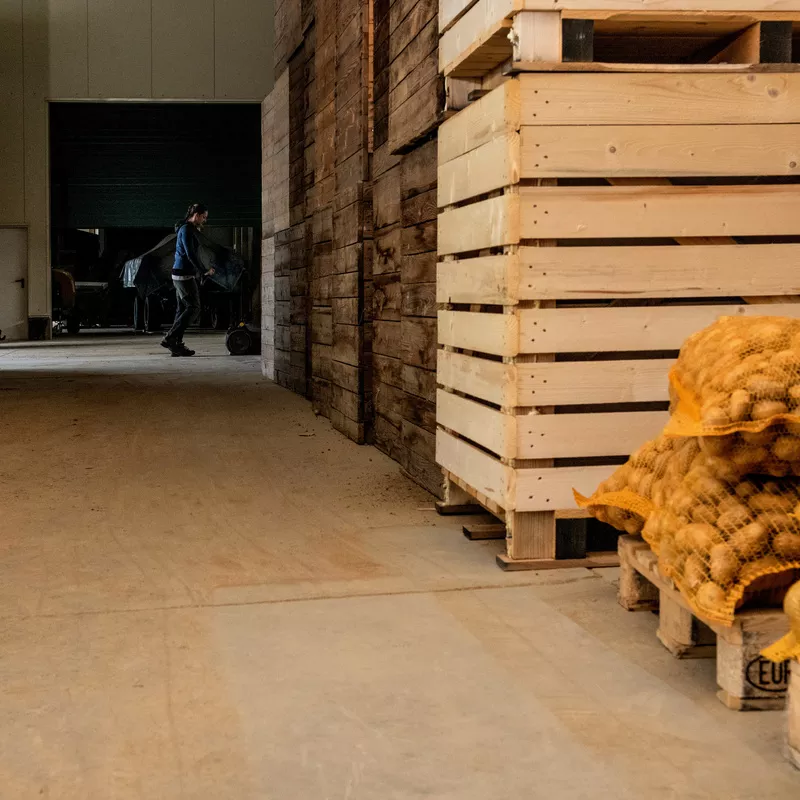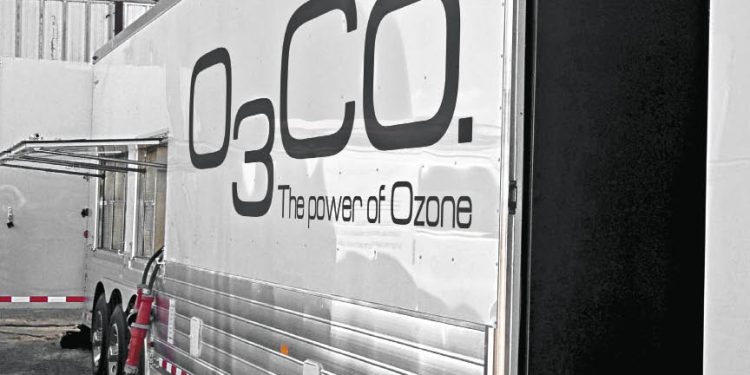Ozone is electrified air, similar to the air that humans breathe, and it can be used to kill bugs, fungus and eliminate mold in grain bins, said a Purdue University expert. “The great thing about ozone is that it does not leave a pesticide residue on the product and it doesn’t affect food quality,” Mason said.
“Many are familiar with ozone, they just aren’t aware of it,”.For example, the smell after a lightning storm is O3, and the smell from a welder’s arc also is ozone. Ozonators also are placed in public restrooms to remove odors. “The great thing about O3 is that it does not leave a pesticide residue on the product and it doesn’t affect food quality,” Mason said.
This technology is used widely in the potato industry for storing potatoes. Mason predicts the organic industry will be the next to adopt the process. “They have no alternatives to use right now,” she said. “They are really struggling to find ways to control insects in bins, and ozone is already approved for the organic market.”

Ozone and Controlled Atmosphere panels storage in the reefer

PurFresh works with ozone that is injected into the reefer container. “We do this via a panel that we, as a company, install in the reefer container,” says Joyce. “In addition to the injection of O3 that affects the atmosphere in the reefer, we also offer a second panel, the CA option including ozone. This also makes it possible to adjust the temperature and CO2 level in the container to the customer’s wishes.
On top of both panels, we also offer container tracking that is connected to these two panels. This makes positioning more accurate than the shipping company platforms and allows us to adjust the panel settings from a distance if necessary.” Using O3 offers other benefits, according to Joyce. “Ozone kills over 99% of all bacteria and fungi in the container.
Imagine that you have a mouldy potato in your load. Under normal circumstances, that fungus spreads in the container and your entire load is ruined. With the ozone panel, however, the damage is limited to that one potato.
It is therefore not surprising that this natural remedy is now also widely used in the fight against coronavirus. It is important that the container is left closed with the use of this panel until it reaches its destination, otherwise the injected O3 escapes from the container.”

Ozone as a post-harvest treatment for potatoes
This project evaluated the potential for using ozone gas as post-harvest treatment for control of disease in stored potatoes. Ozone is a short-lived, highly reactive oxidizing agent with demonstrated potential to control disease-causing microorganisms.
- Application of ozone (10-20 mg O3/kg/hr) and Purogene® (Chlorine dioxide; 200 ppm) for 1 day at the mid-point of the winter storage period had no effect on disease levels, skin colour or weight loss measured at the end of storage.
- When tubers were inoculated with a range of pathogens (Fusarium sambucinum, F. solani., Phytophthora infestans, Helminthosporium solani), introduced at wound depths appropriate to each disease, disease levels typically increased, however O3 treatment (20 mg O3/kg/hr) did not reduce development of any of these diseases.
- In the absence of potential interference by the surrounding storage environment, pure cultures of Fusarium spp., P. infestans and sclerotia of Sclerotinia sclerotiorum were exposed to 45 mg O3/plate/hr for 1 or 2 days. The O3 treatments had no effect on sporulation of any of the pathogens and did not reduce mycelial growth of Fusarium spp. Mycelial growth of Phytophthora and sclerotial germination of Sclerotinia were suppressed for the duration of the O3 treatment period, however normal growth resumed when the cultures were placed in O3-free conditions.
- O3 treatments (up to 320 mg O3/kg/hr for 2 days) did not reduce the sprouting ability of seed potatoes, however ozone treatments (~20 mg O3/kg/hr for 1, 7 or 21 days) significantly reduced wound periderm thickness of treated potatoes. Treating seed potatoes with ozone (0 or 20 mg O3/kg/hr for 1 or 2 days) prior to planting typically did not affect plant stand or yield, however under cool, wet conditions, O3-treated seed potatoes produced poorer stands and yields relative to the controls.
Based on the results obtained for the range of treatments evaluated in this project, ozone appears to have limited potential as a disease management tool in stored potatoes.

A very important lesson was that the powerful, oxidizing effects of ozone when applied continuously could cause rust in a steel building. O3Co decided to change its entire approach and, rather than apply a continuous amount of O3 to contain bacteria, molds, etc., it would make larger machines and apply higher amounts of ozone in shorter periods. It was found there was no rusting and a better kill rate of bacteria was achieved. Since then, the company recommends “blasting” storages, getting control and moving on. Results have proven much more effective and side effects have become nonexistent.

The company has also found it could produce the largest quantity of pure ozone with the most reliable mobile O3 – generator available anywhere. In addition to working with UI, the company has partnered on research projects with Purdue University, Kansas State, North Dakota State, Texas A&M and the Idaho National Laboratory on potatoes, onions and grains. In 2008, O3Co expanded into treating grain in storage with ozone, in a partnership with Archer Daniels Midland Company (ADM)








